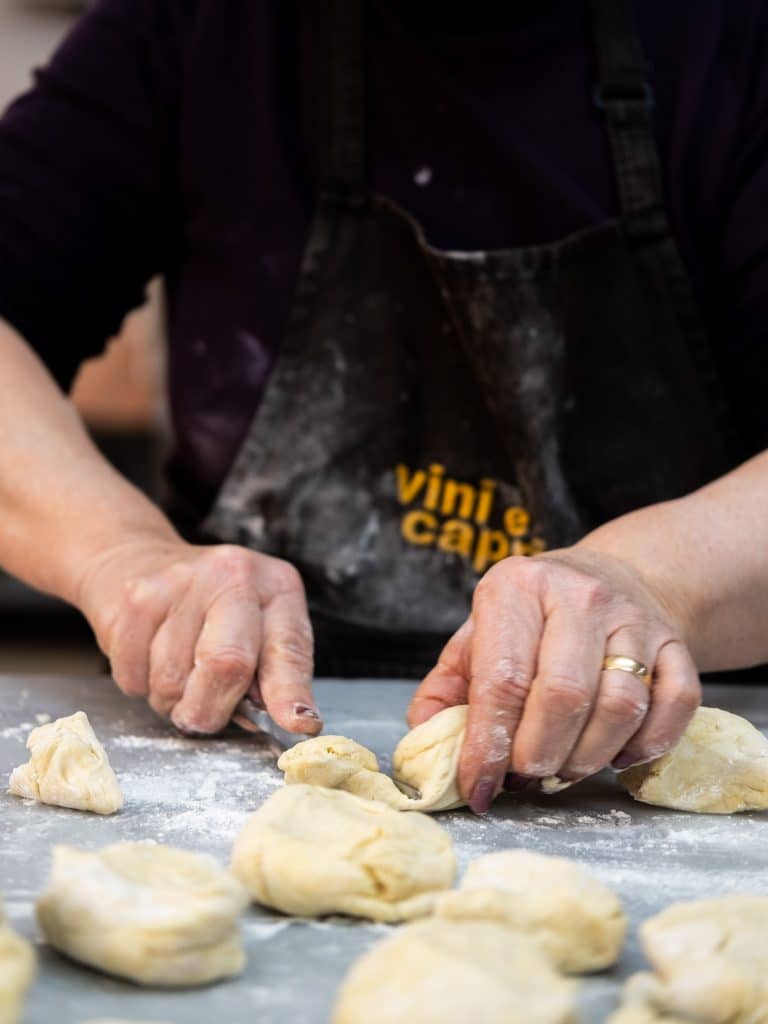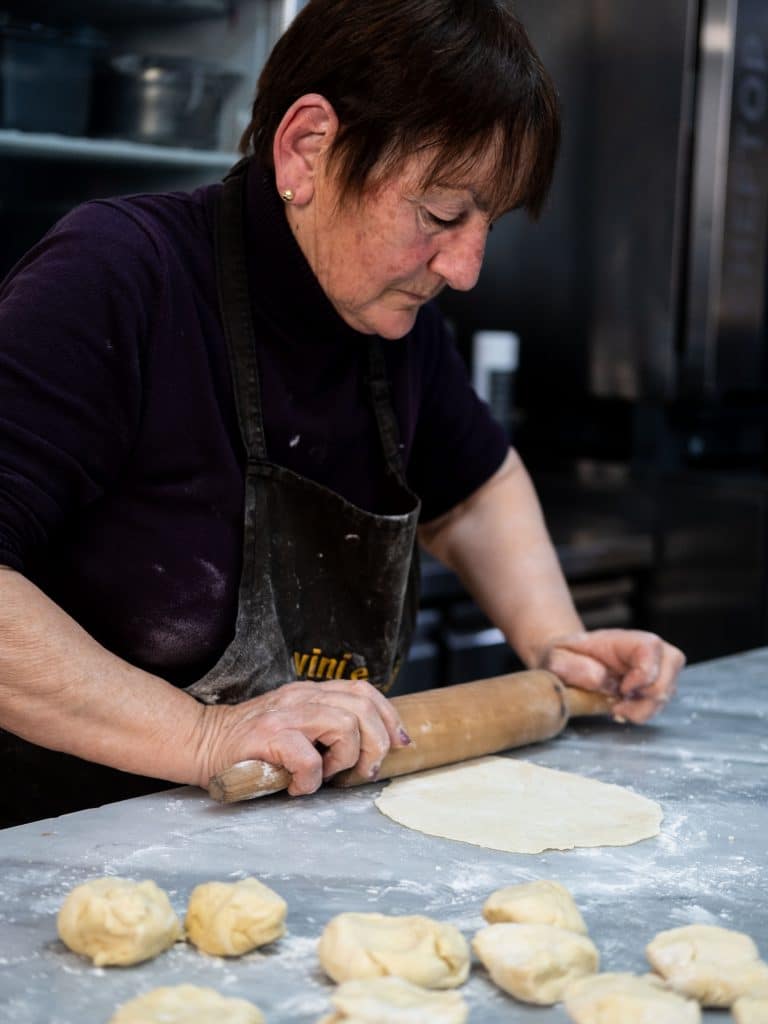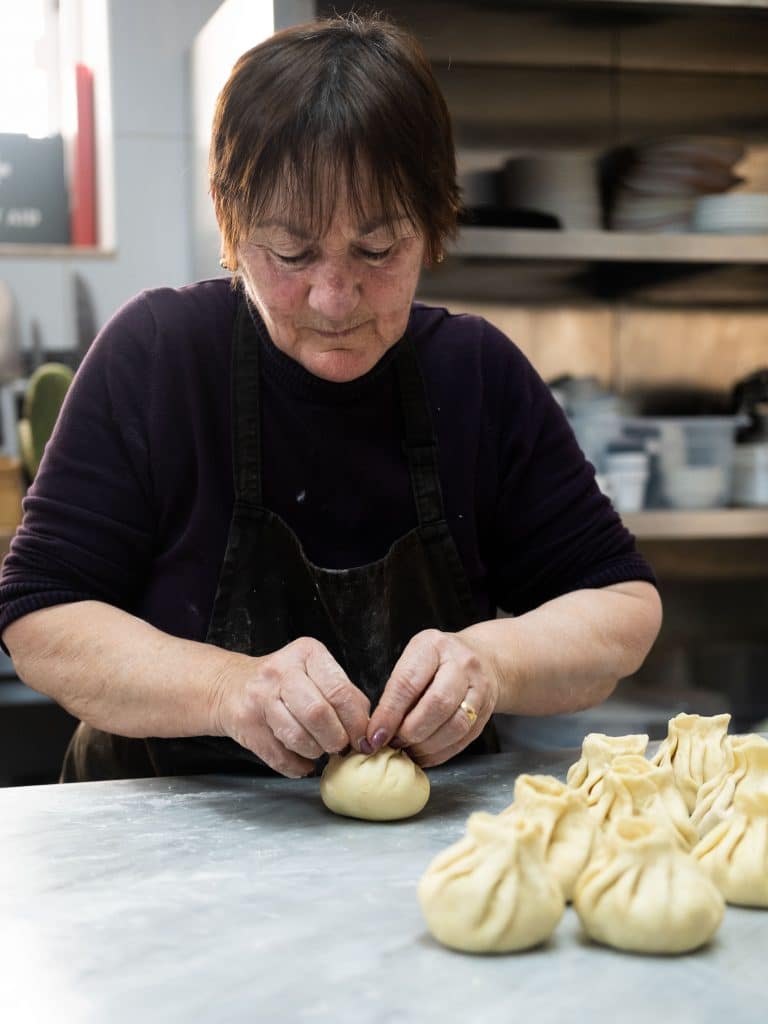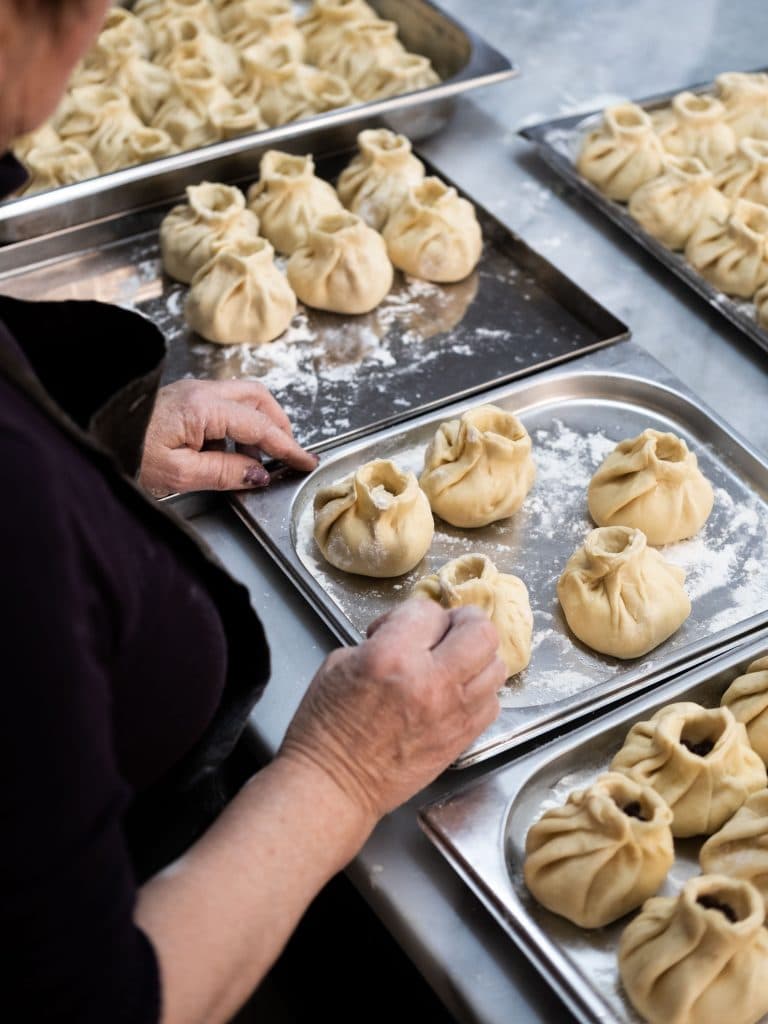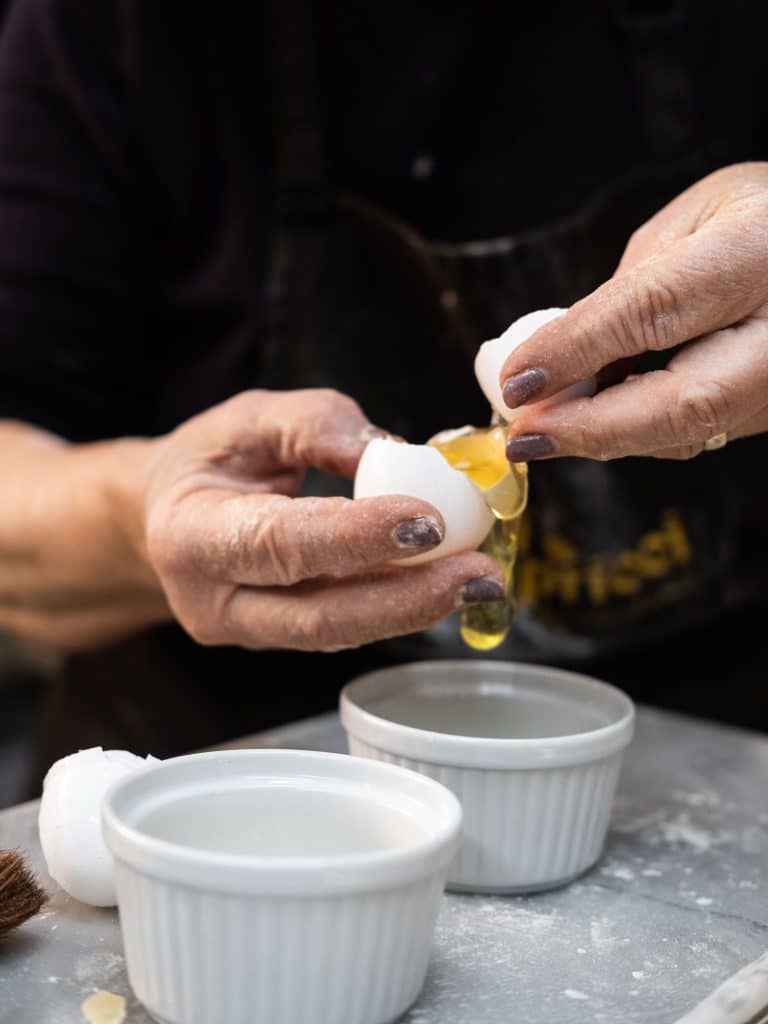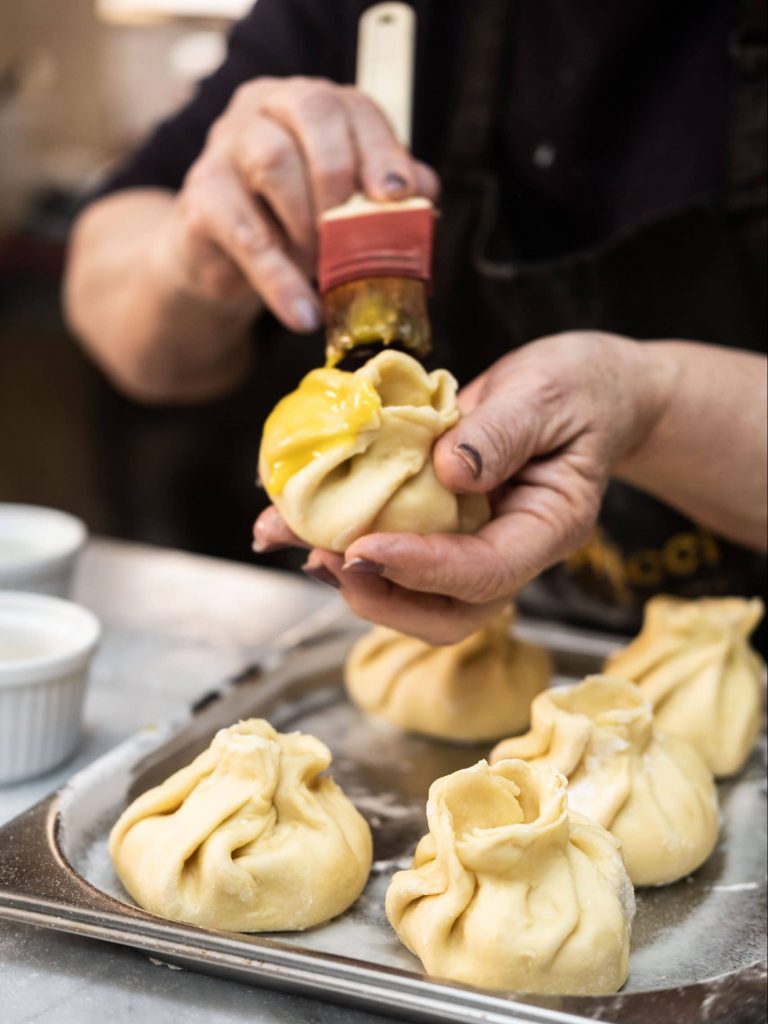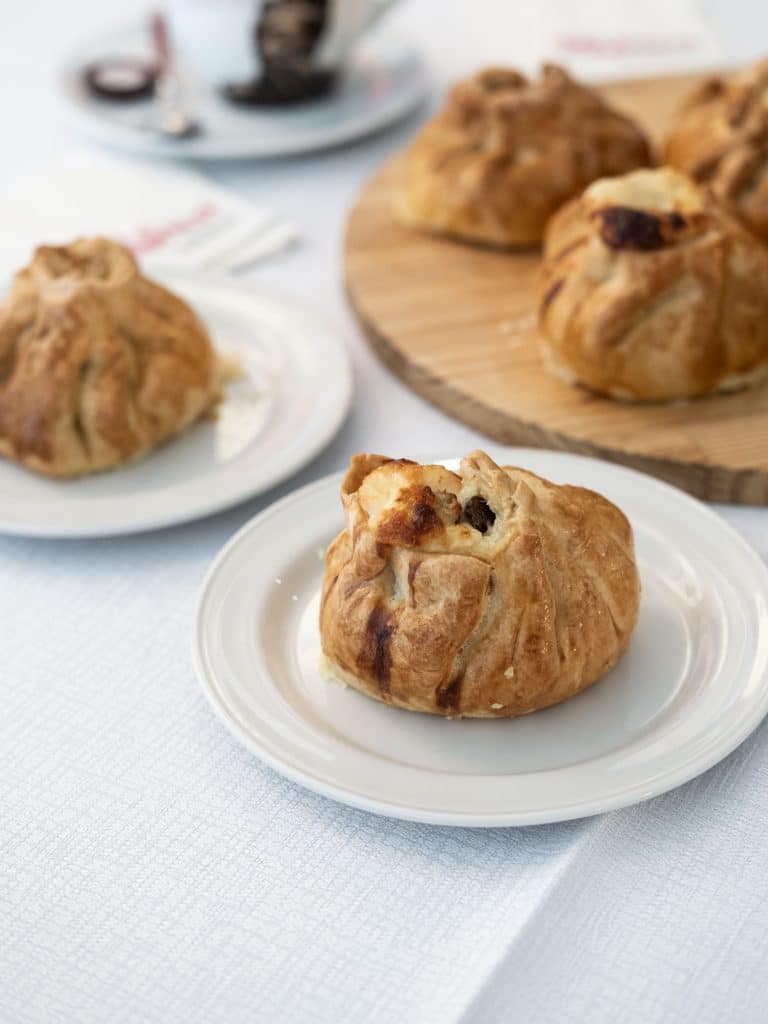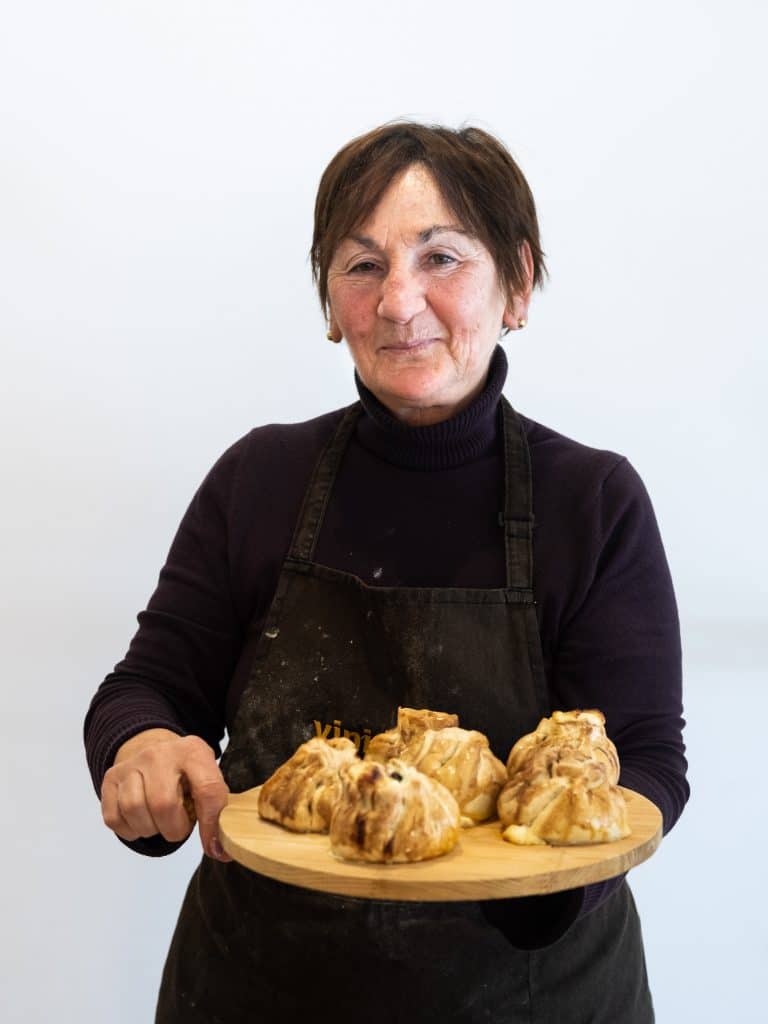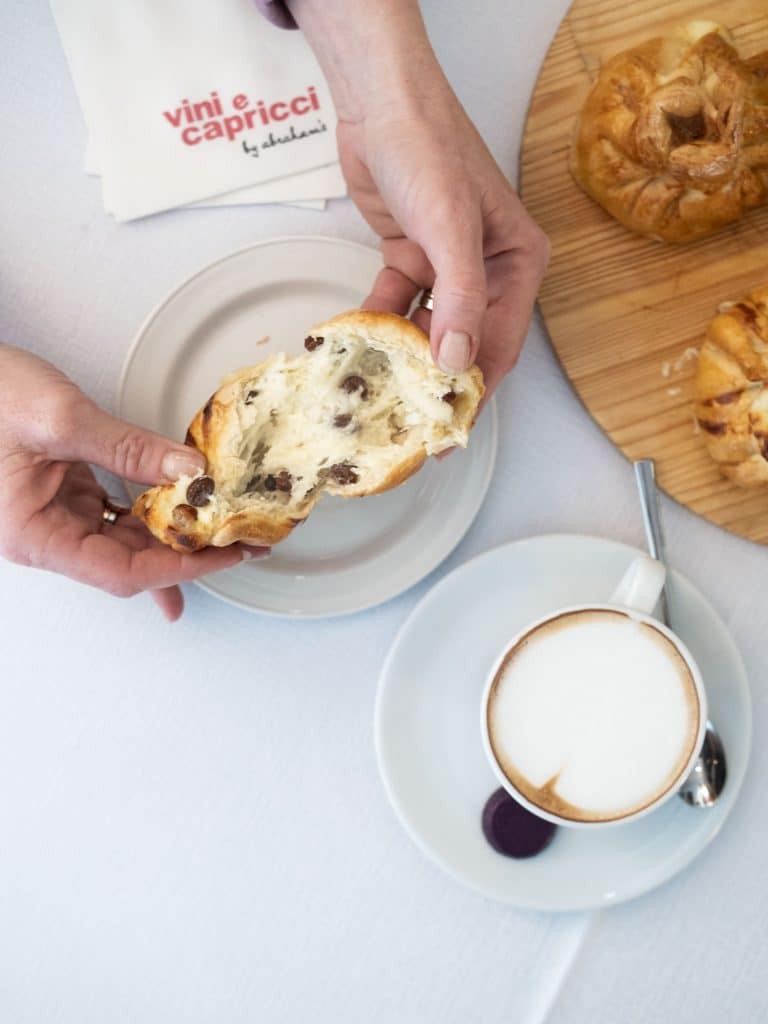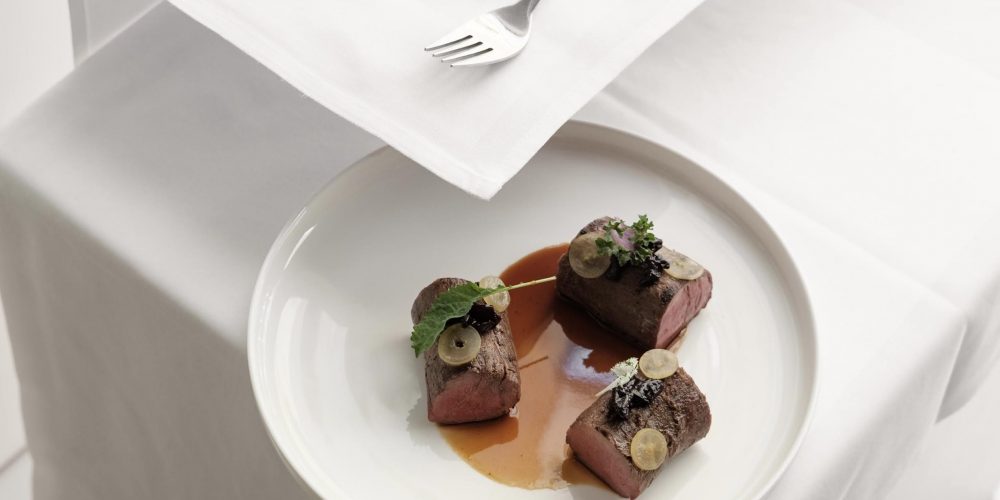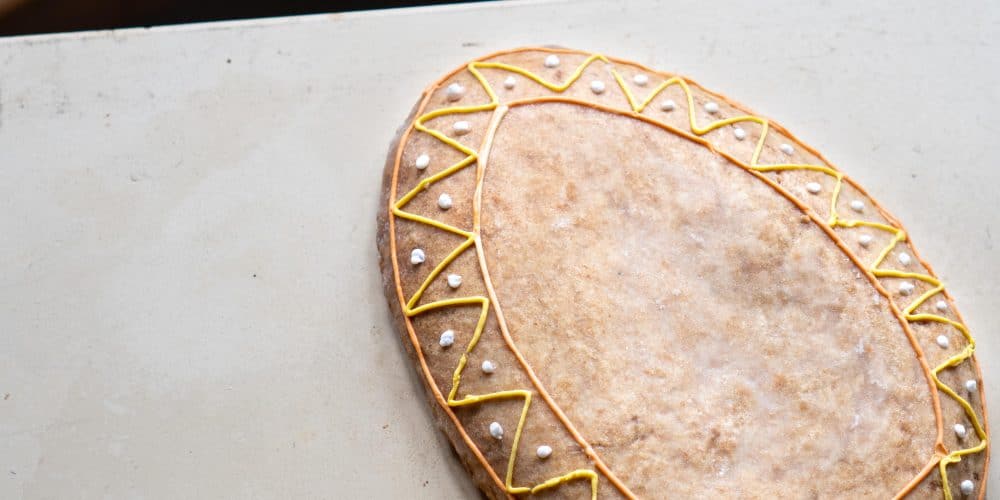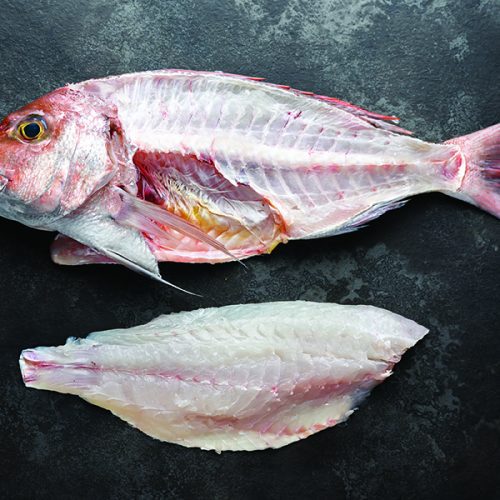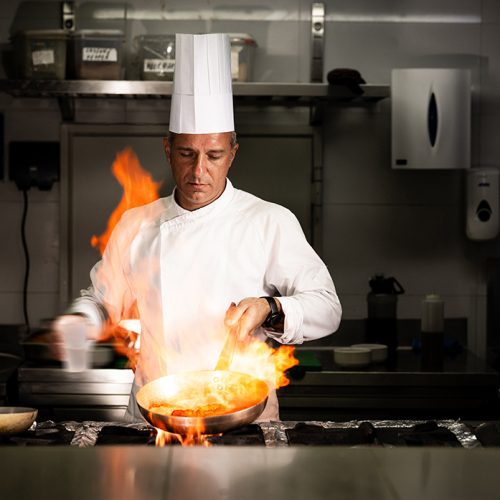
For the first of a series of SPOTLIGHT! interviews, where we reveal the latest and greatest on the the local food scene, we are shining light onto Abraham’s legendary baker of the famous Qassatat tax-Xagħra or Qassatat tal-Għid – Mary Anne Sultana, a.k.a Mananni. Read on for top tips for home-bakers giving this Easter pastry a try and watch the video below.
Tell us about yourself Mananni?
My name is Mary Anne, but they often call me Mananni. I live in Xaghra, I have three children and I am a Grandma of five. My daughter Michelle is married to Abraham, the owner of Vini e Capricci. This gave me the opportunity to start selling the Qassatat to our esteemed clients.
Where did you learn to cook?
Actually, I never learnt to cook at a school, I just used to spend hours watching my mother cooking. Some of my favourite dishes to cook are soups, minestrone, maltese brodu (broth). You also find me working with and baking anything that has to do with pastry, such as: zucchini pies with rice, meat pies, corned beef pies, amongst others.
And obviously the famous traditional Qassatat tax-Xagħra or Qassatat tal-Għid – Where did the names come from?
Qassatat tal-Għid are taken only during the Easter period, hence their name. I am not sure of how this tradition origined, or who started it. But I always remember the people of Xaghra making them, in fact, this is a very old tradition which is still widely practiced in this locality. We also strive our best to pass down this tradition, so the next generation has the knowledge to pass it on.
So how did you learn the method?
This is once again based on what I learned from watching my mum. I stopped making the Qassatat for a while, back when I was in Australia, around 1972, but then I started again once I got back in Malta, as for me, this has been part of the Island’s food culture and my upbringing. I have always followed the same method – I believe that these are best done by hand.

What’s your secret?
Honestly, I think the secret to this lies in the ingredients. I always use pure sheep’s milk cheese which I get from a farmer, this makes this recipe different than Qassatat tal-Irkotta (Ricotta). Perhaps closing the dough and achieving a qassatat shape by pinching the edges of the dough into pleats, is also a bit tricky. My children, grandchildren, family, and now even clients say they love the way I do these qassatat – they often call them morsels of joy.
Can you run us through the recipe roughly?
Okay, so basically the filling is fresh cheese, sheep’s milk grated cheese and eggs. That’s it. No salt, no additives, nothing. Just the pure ingredients, and obviously the pastry. You have to knead the dough really quickly, since once the yeast is added, the dough starts to rise. Otherwise, it will feel tight and tough, and won’t stretch properly.
And timing?
It takes about 1 hour preparation time for a kilo of flour. Then you bake these for 20 minutes in a pre-heated oven.
Tips for baking at home?
If you wish to try your hand at making qassatat, I would suggest you have all the ingredients prepared before you start cooking, as well as making sure that the tools are set out and the oven is pre-heated (golden rule). This helps fasten and eases the process. You can also freeze the rest – they are ever so handy on those days when there simply isn’t any time to make and bake.
Nowadays it is pretty easy, but if we go back in time, back to the time before everyone had their oven at home, people used to take the qassatat to the village bakers, and return in a few minutes time with a ‘maltese qoffa’ (wicker basket) full of baked qassatat smelling like heaven.
So they’re only eaten at Easter?
Due of abstaining of meat, housewives used to prepare them mainly for the Lenten season. An interpretation of these traditional Easter pastries is that the top is left open so that when they are baked in the oven and the filling overflows, it symbolises the resurrection of Jesus Christ. Additionally, the production of ġbejniet is at its peak during such months. It was also a tradition to prepare these for Good Friday. People used to eat Qassatat tal-Għid after the solemn commemoration at the Church on Good Friday, which used to last 2 to 3 hours.
Are there any variations to the recipe?
The Qassatat tal-Għid can be enjoyed cold, warm or even room temperature, on their own or with a tasty soup. Some people like them with Sultana, a bit sweeter, some of them not. It is all up to one’s taste and liking.
Order your Qassatat from Vini e Caprici by Abraham’s through their site
Or call on (+356 ) 21563231

